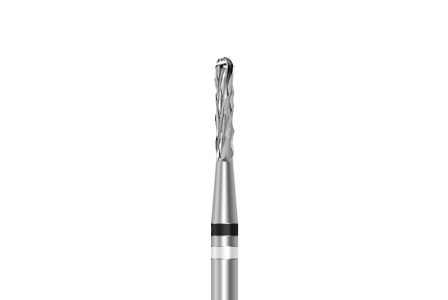Choosing the Right Dental Bur for Every Procedure: A Guide for Dental Professionals
I. Introduction
Dental burs are essential tools in any dental procedure. They are used to prepare teeth for fillings, crowns, and other restorative work, as well as for removing decay and shaping teeth. Choosing the right dental bur is crucial for achieving good results and preventing complications. This guide provides dental professionals with an overview of different types of dental burs, shapes, sizes, and materials, as well as tips for selecting and using the right bur for each procedure.
II. Types of Dental Burs
Dental burs are rotary cutting instruments that come in a variety of shapes, sizes, and materials. They are used in dental procedures to remove hard tissue, shape teeth, and prepare surfaces for restorative work. There are many different types of dental burs, including diamond burs, carbide burs, and finishing burs. Each type of bur has its own unique properties and uses. Choosing the right type of dental bur is important for achieving optimal results and reducing the risk of complications.
III. Dental Bur Shapes
Dental burs come in a variety of shapes, each designed for a specific purpose. Common dental bur shapes include round, pear, flame, cylinder, and inverted cone. Round burs are used for creating holes or preparing a surface. Pear-shaped burs are used for contouring, shaping, and smoothing. Flame burs are used for shaping the occlusal surface of posterior teeth. Cylinder burs are used for preparing flat surfaces or for finishing a restoration. Inverted cone burs are used for removing tooth structure, creating undercuts, or accessing areas that are difficult to reach. When selecting a dental bur shape, it is important to consider the specific procedure and the type of material being worked on.
IV. Dental Bur Sizes
Dental burs come in a variety of sizes, ranging from small to large. The size of the bur is determined by the diameter of the head. Common dental bur sizes include #1, #2, #4, and #6. Smaller burs are used for precision work, while larger burs are used for removing large amounts of material quickly. When selecting a dental bur size, it is important to consider the amount of tooth structure that needs to be removed, as well as the size and location of the tooth being worked on.
V. Dental Bur Materials
Dental burs can be made from a variety of materials, including stainless steel, carbide, and diamond. Stainless steel burs are the most commonly used type of bur and are typically used for basic cutting and shaping. Carbide burs are made from a combination of tungsten carbide and cobalt and are more durable than stainless steel burs. They are commonly used for cutting and shaping harder materials, such as enamel and dentin. Diamond burs are made with diamond particles embedded in the cutting surface and are the most abrasive type of bur. They are typically used for cutting and shaping ceramics and other hard materials. When selecting a dental bur material, it is important to consider the specific procedure and the type of material being worked on.
VI. Dental Bur Sterilization and Maintenance
Proper sterilization and maintenance of dental burs is important for preventing infection and ensuring the longevity of the bur. Dental burs should be sterilized using an autoclave or other approved sterilization method after each use. Burs should also be properly cleaned and lubricated to prevent rust and damage. It is important to inspect burs regularly for signs of wear or damage and to replace them as needed.
VII. Dental Bur Selection and Usage
Selecting the right dental bur for each procedure is important for achieving optimal results and preventing complications. When selecting a dental bur, consider the type of material being worked on, the size and location of the tooth, and the specific procedure. Always use the bur according to the manufacturer’s instructions and avoid using excessive force, which can cause damage to the bur and the tooth. It is also important to regularly inspect burs for signs of wear or damage and to replace them as needed.
VIII. Conclusion
Choosing the right dental bur is crucial for achieving good results and preventing complications in dental procedures. By considering the type of bur, shape, size, and material, as well as proper sterilization and maintenance techniques, dental professionals can select and use the right bur for each procedure. Regular inspection and replacement of burs is also important for maintaining the longevity of the bur and preventing damage to the tooth.



